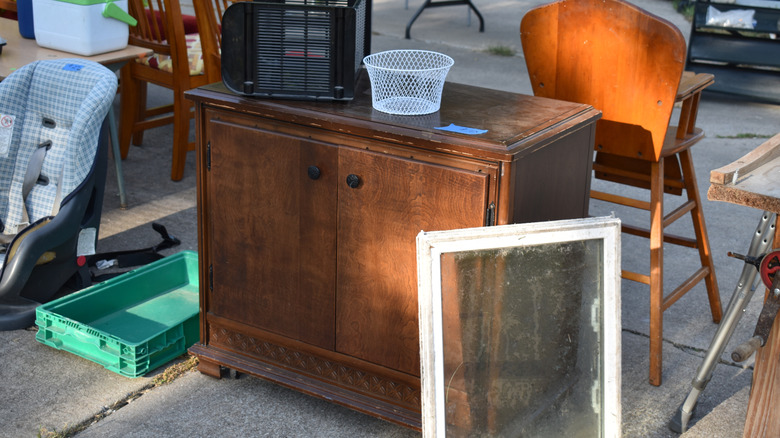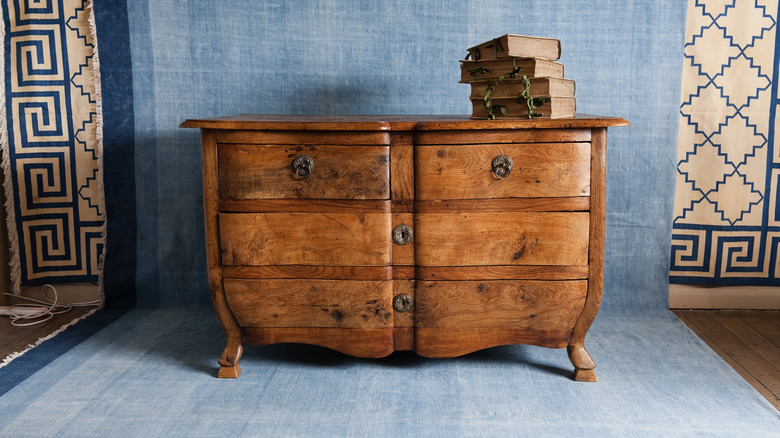The Valuable Type Of Furniture You Shouldn't Overlook At Estate Sales
There are many prized items you shouldn't overlook when shopping at an estate sale, but perhaps nothing so exciting as getting a great deal on expensive furniture. If you're in the right place at the right time, certain types of furniture could end up costing you only a fraction of what you would pay a vintage reseller or antique store. And while determining whether a piece of furniture is trash or treasure can be intimidating (or even overwhelming), here's a hot tip that'll work to your advantage: Antique solid wood furniture is often a steal.
Solid wood furniture made before the 1950s or so was, to put it bluntly, better made than the particle board, mass-produced items in the decades since. Such furniture has the capability to survive (or already has survived) multiple owners over decades and decades, without getting torn to pieces like contemporary furniture does. On top of solid wood furniture boasting a generally high level of quality and craftsmanship, wood is also a material that's easy to refinish – so even if you find something scratched, old, and dingy, you can bring it back to life with some sandpaper and wood stain.
Look carefully at a few factors when buying solid wood furniture at estate sales
Today's furniture scene is very different from that of centuries ago. Nowadays, most people either get their furniture from big box stores, or they assemble their own furniture out of wide flat IKEA boxes. Both options are mass-produced and easily damaged. Antique wood furniture, meanwhile, lives in a class by itself.
That said, before you get excited about an estate sale deal, take a close look at the furniture piece in question. Open the drawers, look underneath, and examine the back for signs of particle board, glue, and peeling veneers. These can be signs of hasty and cheap construction, but also a sign it's not really an antique. That's because quality wood pieces will often be brought together seamlessly, sometimes with dovetailing. They usually have somewhat softened edges, and the wood grain will be distinct, asymmetrical, and go in a single direction. While you can sometimes find a gem temporarily ruined under layers of paint, it can be more difficult to suss out whether or not the piece is actually made from quality materials. That said, if it's particularly affordable, it may be worth the risk.
Wood material is an important indicator of value, as well. Cedar or mahogany are worth more than birch or ash, for example. And remember not to weigh the hardware into your purchasing decision. Though it may be looking a bit sad when you first see it at the estate sale, materials copper, brass, and silver can easily be polished back to their former glory.

